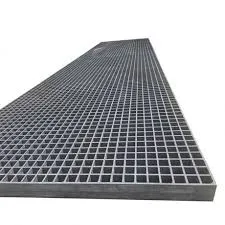
-
 Afrikaans
Afrikaans -
 Albanian
Albanian -
 Amharic
Amharic -
 Arabic
Arabic -
 Armenian
Armenian -
 Azerbaijani
Azerbaijani -
 Basque
Basque -
 Belarusian
Belarusian -
 Bengali
Bengali -
 Bosnian
Bosnian -
 Bulgarian
Bulgarian -
 Catalan
Catalan -
 Cebuano
Cebuano -
 China
China -
 China (Taiwan)
China (Taiwan) -
 Corsican
Corsican -
 Croatian
Croatian -
 Czech
Czech -
 Danish
Danish -
 Dutch
Dutch -
 English
English -
 Esperanto
Esperanto -
 Estonian
Estonian -
 Finnish
Finnish -
 French
French -
 Frisian
Frisian -
 Galician
Galician -
 Georgian
Georgian -
 German
German -
 Greek
Greek -
 Gujarati
Gujarati -
 Haitian Creole
Haitian Creole -
 hausa
hausa -
 hawaiian
hawaiian -
 Hebrew
Hebrew -
 Hindi
Hindi -
 Miao
Miao -
 Hungarian
Hungarian -
 Icelandic
Icelandic -
 igbo
igbo -
 Indonesian
Indonesian -
 irish
irish -
 Italian
Italian -
 Japanese
Japanese -
 Javanese
Javanese -
 Kannada
Kannada -
 kazakh
kazakh -
 Khmer
Khmer -
 Rwandese
Rwandese -
 Korean
Korean -
 Kurdish
Kurdish -
 Kyrgyz
Kyrgyz -
 Lao
Lao -
 Latin
Latin -
 Latvian
Latvian -
 Lithuanian
Lithuanian -
 Luxembourgish
Luxembourgish -
 Macedonian
Macedonian -
 Malgashi
Malgashi -
 Malay
Malay -
 Malayalam
Malayalam -
 Maltese
Maltese -
 Maori
Maori -
 Marathi
Marathi -
 Mongolian
Mongolian -
 Myanmar
Myanmar -
 Nepali
Nepali -
 Norwegian
Norwegian -
 Norwegian
Norwegian -
 Occitan
Occitan -
 Pashto
Pashto -
 Persian
Persian -
 Polish
Polish -
 Portuguese
Portuguese -
 Punjabi
Punjabi -
 Romanian
Romanian -
 Russian
Russian -
 Samoan
Samoan -
 Scottish Gaelic
Scottish Gaelic -
 Serbian
Serbian -
 Sesotho
Sesotho -
 Shona
Shona -
 Sindhi
Sindhi -
 Sinhala
Sinhala -
 Slovak
Slovak -
 Slovenian
Slovenian -
 Somali
Somali -
 Spanish
Spanish -
 Sundanese
Sundanese -
 Swahili
Swahili -
 Swedish
Swedish -
 Tagalog
Tagalog -
 Tajik
Tajik -
 Tamil
Tamil -
 Tatar
Tatar -
 Telugu
Telugu -
 Thai
Thai -
 Turkish
Turkish -
 Turkmen
Turkmen -
 Ukrainian
Ukrainian -
 Urdu
Urdu -
 Uighur
Uighur -
 Uzbek
Uzbek -
 Vietnamese
Vietnamese -
 Welsh
Welsh -
 Bantu
Bantu -
 Yiddish
Yiddish -
 Yoruba
Yoruba -
 Zulu
Zulu
frp duct system
Understanding FRP Duct Systems An Innovative Solution for Modern Infrastructure
Fiber Reinforced Polymer (FRP) duct systems have emerged as a revolutionary solution in various industrial applications, thanks to their superior properties that offer significant advantages over traditional materials like metal and concrete. This article explores the characteristics, benefits, and applications of FRP duct systems, shedding light on why they have become increasingly popular in modern infrastructure projects.
At its core, an FRP duct system is composed of a polymer matrix reinforced with fibers, typically glass, carbon, or aramid. This construction enables the system to achieve remarkable strength-to-weight ratios, making it much lighter than steel or concrete counterparts while retaining substantial durability. One of the most crucial benefits of FRP duct systems is their resistance to corrosion. Unlike metal duct systems that can degrade over time when exposed to moisture, chemicals, or harsh environmental conditions, FRP materials are inherently resistant to such corrosive elements. This property significantly extends the service life of duct systems, reducing the need for frequent maintenance or replacements.
Understanding FRP Duct Systems An Innovative Solution for Modern Infrastructure
Another key advantage of FRP duct systems is their superior thermal insulation properties. These systems can be designed to minimize heat transfer, which is crucial in applications where temperature control is essential. By reducing energy losses, FRP systems contribute to more energy-efficient operations, aligning with sustainability goals and lowering operational costs for businesses.
frp duct system

In terms of fire resistance, FRP ducts can be manufactured to meet specific fire safety standards, ensuring that they do not contribute to fire propagation. This is particularly important in environments such as tunnels, commercial buildings, and industrial facilities where safety is paramount.
In addition to these benefits, FRP duct systems are versatile and find applications across various industries. In the aerospace sector, they are used in air handling systems due to their lightweight characteristics. In the chemical processing industry, their corrosion resistance makes them ideal for transporting corrosive substances or gases. Furthermore, in the renewable energy sector, especially in wind and solar energy applications, FRP ducts help improve system efficiency and longevity.
Despite their numerous advantages, it is essential to recognize that FRP duct systems may not always be the most cost-effective solution for every situation. While they offer long-term savings through reduced maintenance and extended longevity, the initial investment can be higher than that of traditional materials. Therefore, a thorough cost-benefit analysis is essential for decision-makers when selecting ducting materials.
In conclusion, FRP duct systems represent an innovative approach to modern infrastructure challenges. Their lightweight, corrosion-resistant, and energy-efficient properties make them a smart choice for industries seeking advanced solutions. As the demand for durable and sustainable materials continues to rise, FRP duct systems are poised to play a vital role in shaping the future of industrial applications while contributing to enhanced operational efficiencies and environmental stewardship.









